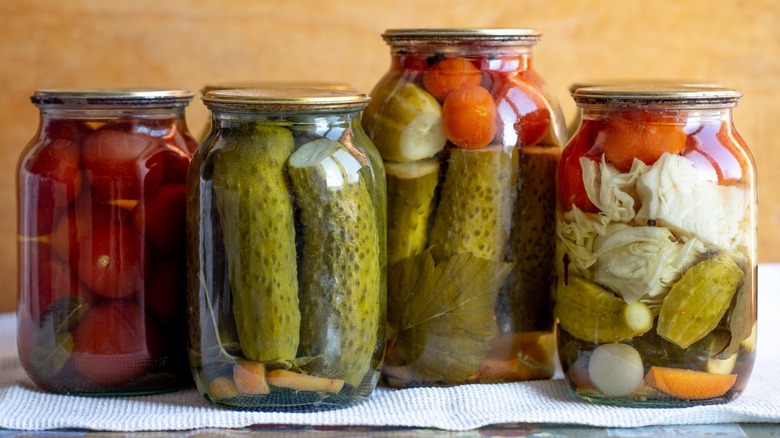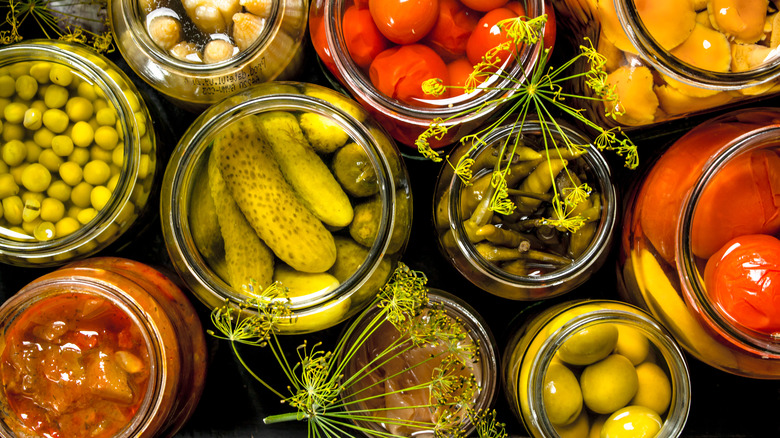Read This Before Trying Those Viral Canned Recipes And Thank Us Later
A way to fill a day with old-fashioned charm and preserve a summer bounty you can crack open six months from now, home canning might seem quaint and cute to us today. Those shiny glass jars look so pretty lined up in the cupboard waiting to be opened, especially compared to the drab gray tins with often crumpled or torn paper labels you can buy at the store.
But there's a reason mass-produced canned foods and frozen veggies surpassed home canning in popularity half a century ago (per National Agricultural Library): botulism. While there is now a low risk from modern commercial canned foods and zero risk from frozen vegetables (via The Globe and Daily Mail), the canned food controversy that almost changed history shows that canned foods used to be fairly dangerous. Prior to the 1950s, botulism had more than a 60% mortality rate (per National Library of Medicine). While modern antibiotics greatly reduce that rate, it's still fatal for over a third for people over 80 who become infected. Food remains the number one source of botulism, even in the modern world.
However, you don't have to swear off home canning — a few simple science-backed tips can keep you safe.
Home canning advice that's more trustworthy than a random tiktoker's grandma.
In the words of science journalist Erin Biba, "Canning really isn't something you want to improvise." Biba recently took to Twitter about the concerning trend of posts spreading unsafe canning practices, saying, "I promise you someone's random grandma's canning recipe isn't the level of safety you wanna rely on!" Ms. Biba is right. According to the National Agricultural Library, a 2005 survey of home canners revealed that 57% "use methods deemed unsafe by USDA standards."
Biba recommends "Ball Complete Book of Home Preserving," which she calls "the canning Bible." She also recommended The National Center for Home Food Preservation, calling it "more trustworthy than a random TikToker's grandma." You can always play it safe with the easiest way to make homemade jam without canning.
When home canning, adding acid like vinegar, lemon juice, or citric acid and following a recipe are integral to canning safety (via National Center for Home Food Preservation). Clostridium botulinum, the bacterium that causes botulism, thrives in low-acid environments (per USDA). C. botulinum is present in soil and seawater, and can be found on fruits and vegetables. While the bacteria itself is killed during boiling, the spores it releases can survive up to 240 degrees F. So while your canned low-acid foods sit on the shelf, the spores are developing in that airtight jar. So if you're canning low-acid foods like pumpkin or asparagus, use acid or a pressure canner.

